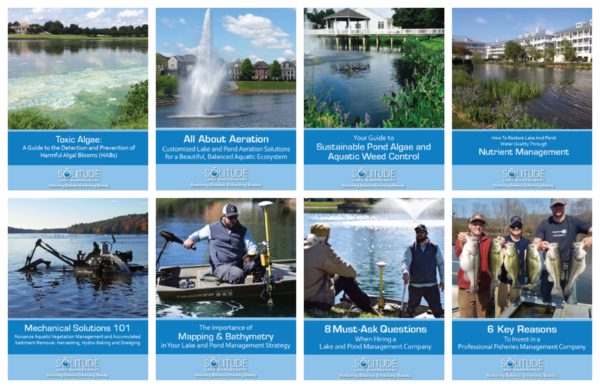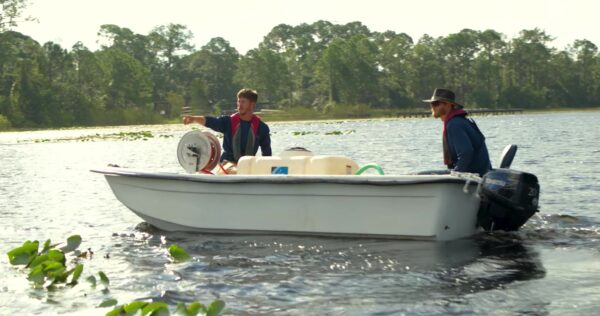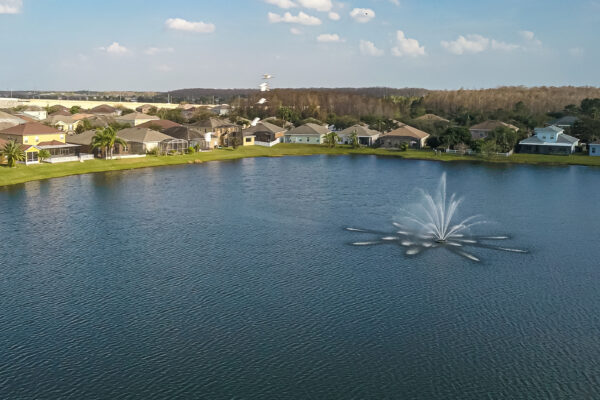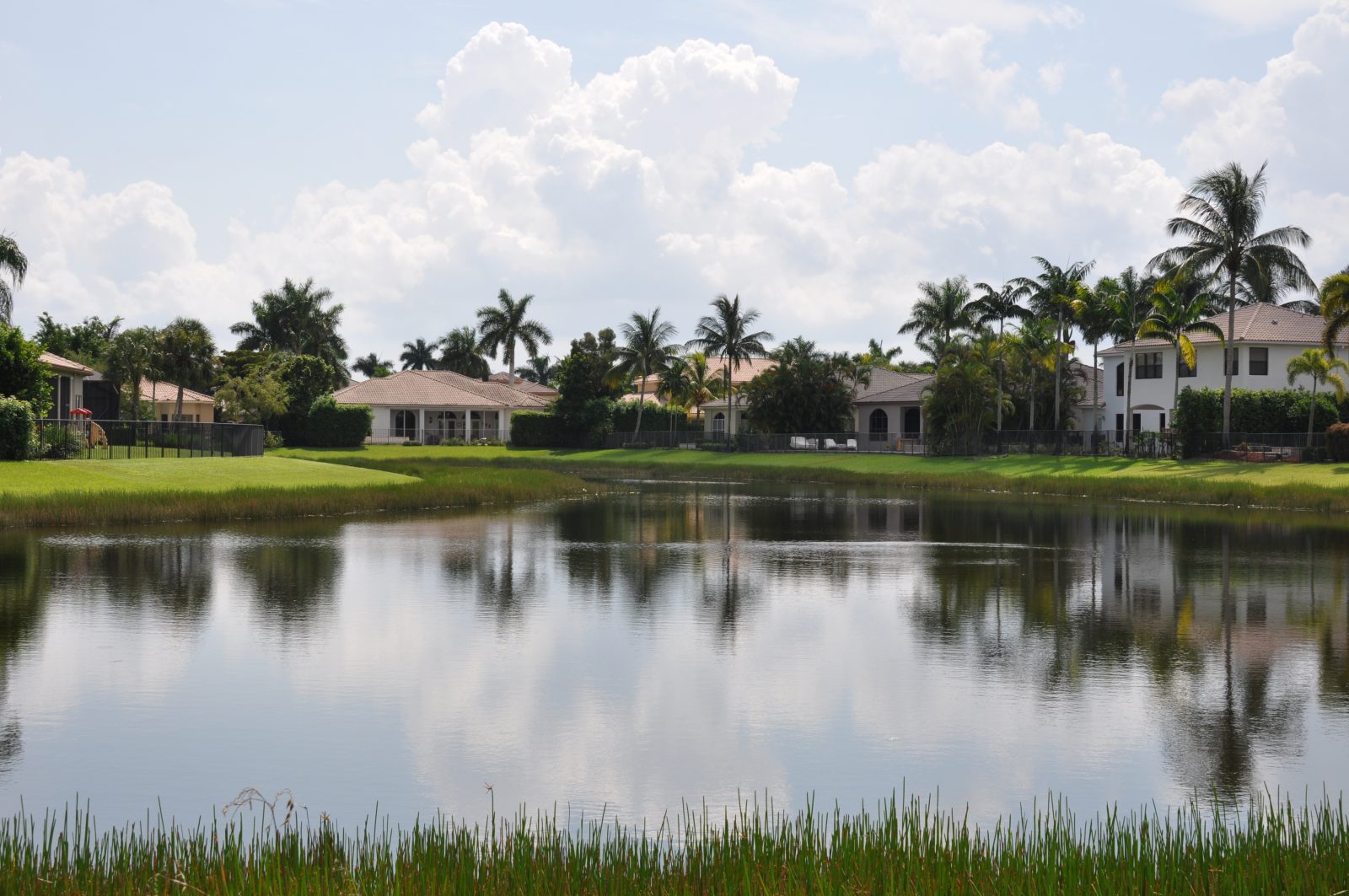
Invasive species are no joke—especially when they invade aquatic environments. From clogging stormwater or irrigation equipment to making ecosystems less hospitable to native wildlife, invasive plants and animals can wreak havoc on ecosystems that haven’t evolved with them.
Thanks to global trade, travel, and unethical transport of invasive species, such as through the aquarium trade, several foreign snail species have quietly established populations in lakes, ponds, rivers, and wetlands across many U.S. states.
Here’s what you need to know and how you can help prevent the spread.
Why Invasive Species Are A Big Deal
Non-native plants and animals can invade virtually any habitat, but are particularly detrimental in aquatic environments. Once an invasive species becomes established in a waterway, it can easily spread downstream or be carried to new locations via boats, fishing gear, or wildlife. And when it comes to snails, their small size and high reproduction rates make them easy to overlook.
Invasive species are known for:
- Outcompeting native species for food and space
- Destroying native habitats and property
- Spreading diseases or parasites
- Clogging or damaging infrastructure
- Further jeopardizing endangered species
- Limiting overall biodiversity
The Most Common Invasive Snails In the U.S.
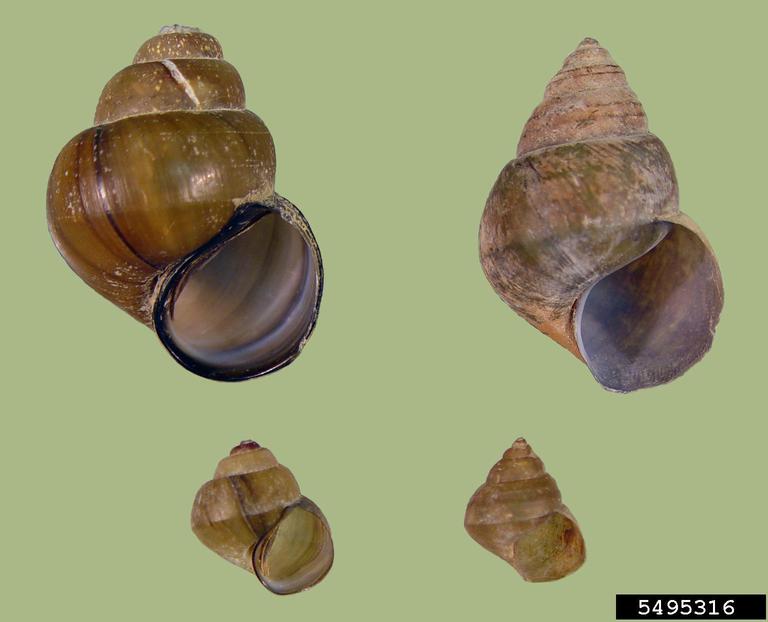
Chinese "Mystery" Snail
Scientific name: Cipangopaludina chinensis
Other common names: Asian apple snail, Asian freshwater snail, or trapdoor snail
Native regions: Native to Southeast Asia, Japan, and eastern Russia.
History and spread:
- First sold in U.S. food markets in San Francisco in the late 1800s.
- By 1965, established on both coasts of the U.S.
- First recorded in the Great Lakes basin (Niagara River) between 1931 and 1942.
- Now found in Lake Ontario, Lake Michigan, and surrounding drainages.
Habitat: Prefers soft, muddy, or sandy bottoms in shallow, quiet waters.
Identification/characteristics:
- Smooth, coiled spiral shell
- Colors range from brown to greenish- or reddish-brown
- Taller than wide; grows up to 3 inches tall
- Shell opening is on the right side when pointed up
- Has an operculum or protective “cover” shielding the opening
Photo credit: Robert T. Dillon, Jr., College of Charleston, Bugwood.org
A 2019 genetic study found that Japanese and Chinese “mystery” snails are genetically distinct species, yet morphologically identical, and typically inhabit the same waterbodies. | Source: David and Cote (2019)
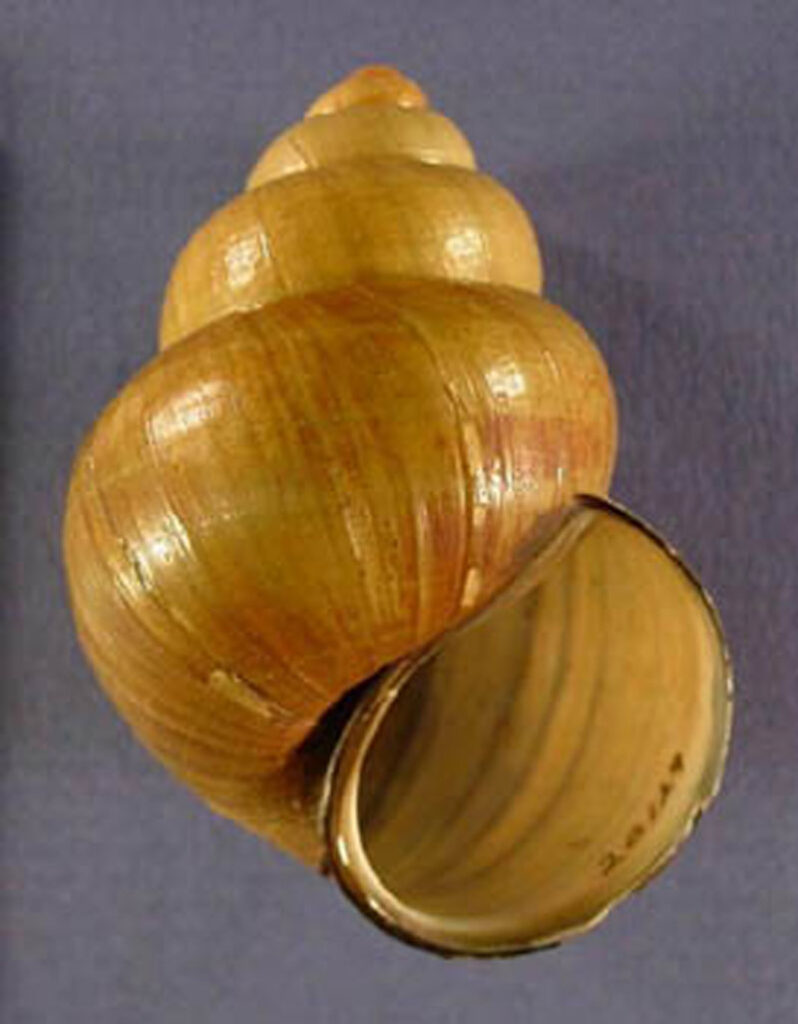
Japanese "Mystery" Snail
Scientific name: Cipangopaludina japonica
Other common names: Oriental mystery snail, Japanese black snail, Japanese trapdoor snail
Native regions: Japan, Taiwan, and Korea
History and spread:
- First imported to San Francisco in 1892 for food markets.
- Likely introduced into the wild through accidental or deliberate release.
- Stocked intentionally in Lake Erie during the 1940s as food for channel catfish
- Now established across the eastern U.S., particularly in the Great Lakes region.
Habitat: Prefers shallow, slow-moving freshwater with sludge and detritus
Identification/characteristics:
- Large, dark shells with an operculum or protective “cover”
- Adults typically have 7–8 whorls and a spire angled at 50–55º
- Can reach up to 50 mm in height, with females growing larger than males
- Females may live up to 8 years and carry 10–120 young
- Juvenile shells are covered in fine hairs and are light in color
Photo credit: Amy Benson, US Geological Survey
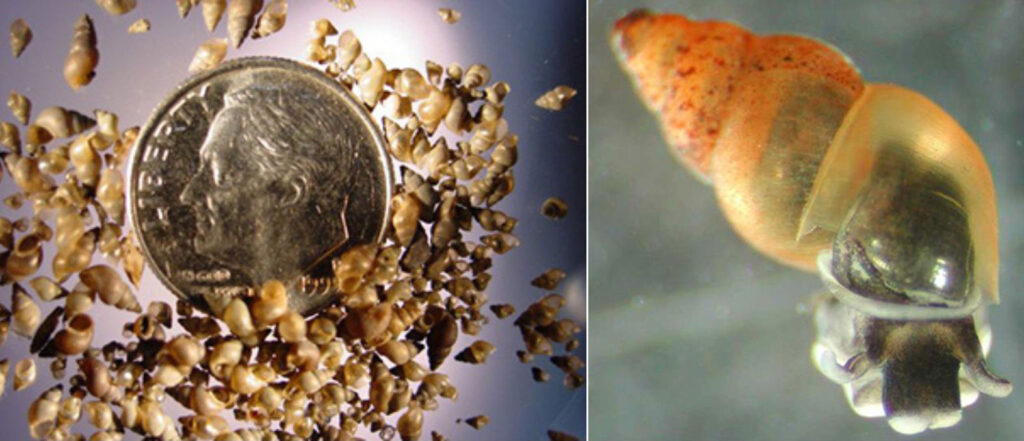
New Zealand Mudsnails
Scientific name: Potamopyrgus antipodarum
Native regions: New Zealand
History and spread:
- First detected in the U.S. in southern Idaho in 1987
- Likely introduced through contaminated gear, ballast water, or aquatic equipment
- Now widespread, particularly in the West and Puget Sound regions
- Growing concerns about their impact on endangered salmon runs
Habitat: Thrive in freshwater environments such as rivers and streams.
Identification/characteristics:
- Typically smaller than 6 mm in length, about the size of a grain of rice—one square meter can be inhabited by 400,000+ snails
- Shells are elongated with 5–6 whorls with an operculum or protective “cover” over the opening
- Shell color varies and can range from gray to light or dark brown
- Females release live young and reproduce asexually; female offspring are genetically identical
- Sexually reproductive males comprise approximately 5% of the population
Photo credits: Dan L. Gustafson and U.S. Geological Survey
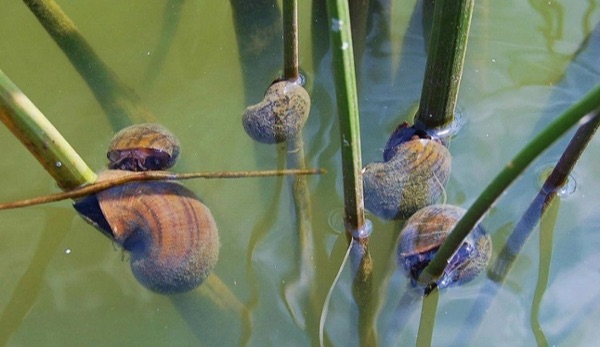
Island Apple Snail
Scientific name: Pomacea maculata
Other common names: Giant Apple Snail
Native regions: South America; Brazil, Paraguay, Uruguay, and northern Argentina
History and spread:
- First recorded U.S. specimen was collected in 1989 but misidentified
- Likely introduced through aquarium trade, escargot industry, and farmed crayfish shipments
- Can carry rat lungworm, a dangerous parasite transmissible to humans
Habitat: Capable of living in both water and damp terrestrial areas
Identification/characteristics:
- One of the largest freshwater snails, reaching up to 155 mm in shell height
- Large, round shell with 3-4 whorls and short spire
- Often tan, yellow, or black with striped patterns
- Feed voraciously on beneficial rooted aquatic plants
- Amphibious with both gills and lungs
- Lay eggs above the waterline, protecting them from aquatic predators
Tackling Invasive Snail Infestations
Invasive snails may be small, but their impact on lakes, ponds, wetlands, and waterways can be anything but. Once established, these non-native species are notoriously difficult to eliminate. That’s why aquatic professionals use a multi-faceted approach to help slow their spread and protect aquatic ecosystems.
Containment screens – One of the first lines of defense is the use of containment screens at key water entry and exit points. These barriers help stop snails from migrating to new areas and allow for more targeted removal. Proper placement and maintenance are essential to ensure the screens function effectively without contributing to flooding risks.
Mechanical hydro-raking – A hydro-rake, much like a floating backhoe, is designed to scoop out muck and organic debris from lake and pond bottoms. In addition to restoring water depth, hydro-raking can support invasive snail control by removing snails and their eggs that are buried in the sediment.
Molluscicides – When mechanical and containment efforts fall short, professionals may turn to molluscicides, products specifically designed to target invasive snails with minimal impact on native wildlife. Molluscicides are highly safe and effective when applied by licensed experts; however, they do not stop new invaders from populating.
Proactive management – These strategies can make a difference, but the most effective approach is a proactive one. To keep invasive snails from spreading, it’s crucial to clean and dry any gear, clothing, or pets that come into contact with lakes, ponds, and other aquatic environments. Mud, twigs, and debris can carry snails or their eggs, so thorough inspection is essential. If you suspect an invasive species is present in your waterbody, immediately contact your state’s Department of Natural Resources or Fish and Wildlife agency.

We Each Play A Role In Invasive Species Prevention
As invasive species threats grow in an increasingly connected world, prevention starts with awareness. Whether your community is at risk or already affected, it’s vital that HOAs, municipalities, property owners, and the public work together. Distributing educational materials and teaching residents how to spot invasive species are simple but powerful steps toward long-term prevention.
Want to know what other invasive species could be lurking in your waters? Click here to explore invasive fish, mussels, and other species that pose a threat to our native ecosystems.
SOLitude Lake Management is a nationwide environmental firm committed to providing sustainable solutions that improve water quality, enhance beauty and preserve natural resources.
SOLitude’s team of aquatic scientists specializes in the development and execution of customized lake, stormwater pond, wetland and fisheries management programs. Services include water quality testing and restoration, algae and aquatic weed control, installation and maintenance of fountains and aeration systems, shoreline erosion control, muck and sediment removal and invasive species management. SOLitude partners with homeowners associations, golf courses, private landowners, businesses and municipalities. SOLitude Lake Management is part of Rentokil, a leading business services company, operating across the United States, Canada and Puerto Rico.
For more information, visit SOLitude Lake Management at solitudelakemanagement.com, and connect on Facebook, LinkedIn, Twitter, Instagram and YouTube.



